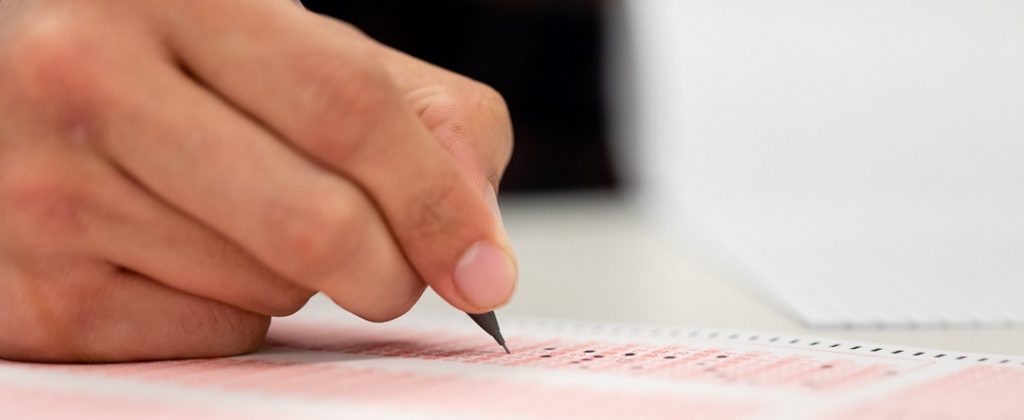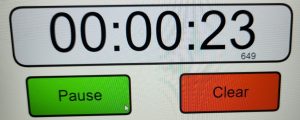
Maximizing Marks
Your GPA is not your identity
Learning to determine when it’s time for solitary schoolwork and when it’s time for more social learning is just one of the skills you’ll acquire through trial and error in university. You may also form an entirely new perspective on grades.
The mistake professors and TAs see most? Students who come into mid-terms and final exams having crammed all night long right before.
“When we are depleted, the worse we do,” said Professor Gazzale. “Adequate sleep, enough to eat at the right times, exercise to reduce stress. It should go without saying that these things are necessary before a major event like an exam.”
There are alternatives to cramming that will maximize your marks on tests and exams. Here are some expert tips from the assistants, advisers, and instructors who have seen everything that ECO101 and ECO102 can do to your GPA.
1. Solidify the Details that Are Under Your Control
Knowledge of time & place
The where and when of the exam are released with the schedule. Times will be written according to the international 24-hour clock. 13:00 is 1PM, 14:00 is 2PM, etc. Exams are also written across the campus, so long before the exam, find each building and go there to see how long the trip will take you. Then, schedule extra time for travel on exam day. There may also be more than one course examination in the same room, so look for signs that you are in the right part of the room.
“There are a lot of details you need to be aware of that you haven’t had to think about before. When you walk into an exam, not only do you have to be sure you are in the right place at the right time – we’ve had students miss exams because they thought 14:00 was 4PM, but you need to make sure you are in the right row for your section of the course. Every professor teaches the course differently and the exams can be very different,” said Jacklyn Rabinovich, an Instructional Support Assistant with the Department of Economics.
Equipment
Before the exam, check your pens, extra pens, pencils, extra pencils, and calculator batteries. If you’ve been using a scientific calculator app on your phone, you need to find a stand-alone device because mobile phones aren’t allowed in exams. You might have to borrow one but consider wearing a watch to keep track of time since you won’t be able to check your phone.
Before leaving for the exam, make sure you have your TCard with you. You’ll need it to verify your identity in the room and you’ll need to write your student number on the exam booklets and bubble sheet along with your name.
Accommodations
If you need accommodations, register with Accessibility Services now.
Students who have disability-related barriers requiring exam accommodations must register with Accessibility Services. For the winter exams, the deadline is 5 p.m. on Friday, October 13. The deadline falls during the short week after the Thanksgiving long weekend when you will be preparing for mid-terms.
“If you need accommodations, you need to register with Accessibility Services well before the exam and go through the proper channels,” advised Rabinovich. “You can’t just come to the exam with your letter of diagnosis. Even the prof is not allowed to make the decision about who gets what accommodation. Your college registrar can help you navigate the system and advocate on your behalf.”
Here’s a video explainer of the registration process.
2. Master the Art of Multiple-Choice Questions
It’s a myth that you can’t study for multiple choice exams. Not only can you study for them, but you should also learn the art of answering these kinds of questions. Here are the elements of that art.
Don’t Forget the Bubble Sheet

Bring a ruler or a blank piece of paper to ensure you are filling out the right answer on the right line on the machine-readable bubble sheet.
“It’s OK to mark your answers on the test or exam booklet itself, just remember to go back and fill the sheet in afterwards,” said Rabinovich. “And don’t leave answers blank! There’s no penalty for wrong answers on multiple choice tests in ECO101 or ECO102, so take a guess and fill something in. There’s a chance you’ll get lucky, and your guess will be right. That can be worth a few extra points “
Don’t forget to put your name and student number on the sheet before you include it with the exam booklet in case they get separated.
Read Every Word of Every Question and Every Answer Every Single Time
There are so many past exams available that multiple choice tests are easy to practice. The danger comes from believing you recognize a question and don’t process the small words that create its many variations. As you read, watch out for negative words like not, none and neither.
Also, read all the possible answers and select the very best one. Most of the responses will be partly correct. You are looking for the answer that best fits the context of the question. Words in the questions that qualify statements, like most, usually and generally can help you differentiate the partly correct answers from the best answer.
Solutions like “all of the above” and “none of the above” should be treated with suspicion.
Make Your Most Educated Guess
As Rabinovich said, there is no penalty for multiple choice wrong answers on ECO101 or 102 exams, but you don’t have to shade any random bubble. If you really don’t know the best answer, eliminate the answers you know are wrong to improve your odds of finding the best answer. In using the process of elimination, you might also consider how the responses are written. If the question is written in the past tense, but one of the answers is written in the present tense, it may be suspicious.
Ease into Essay and Short Answer Questions

Essay and short-answer questions give you the opportunity to express what you have learned in your own words. No one else will respond to the questions in precisely the same way you do. The following are rules of thumb to help you squeeze out extra marks during this part of the exam.
In the short answer and written sections, you will lose marks for writing what is not correct and relevant to the question. Take some time to plan your work, read the question thoroughly and separate the set-up details from the question you must answer. And remember, start with the analysis.
“Students often jump to a conclusion before they have had a chance to do the analysis: either graphical, mathematical or otherwise,” cautioned Gazzale. “And once a human being has reached an incorrect conclusion, they generally have no problem writing a seemingly convincing—but ultimately incorrect—argument in support.”
Use economics vocabulary
First year courses expose new students to the terms, concepts, expressions, and jargon of the field. Essay and short answer questions are your opportunity to show you are beginning to think and write like an economist. Whenever you can, practice economics vocabulary in both text and audio conversations. Participating in the class forums and reading how your instructors, TAs and peers do it is a convenient (and required) way to get in the habit. All the practice will help the language of economics to flow more naturally when you’re writing the exam.
Make the booklet look neat and well-organized
Even when you are rushing through an exam, neatness matters. It’s much easier for the person marking the exam to be generous when they don’t have to work too hard to decipher your writing. Label and title your answers so it is clear which question you are answering at which point in the booklet. It also helps to use the wording from the question itself in the first sentence of your answer.
Time management for maximum value
One of the reasons labels and titles are important to use in organizing your work is that they notify the marker when you write the exam out-of-order.
If you have three hours to finish the exam, manage your time so that you spend it on the highest value questions first. If question B is worth 30% of the exam points, and question A is only worth 10%, then question B takes priority. Re-state the question, tell the marker how you are conducting the analysis and why that method applies. Then, draw your conclusions to finish. Don’t add more.
“Students generally write too much,” Professor Gazzale said. “Often this is out of fear of the regret they will feel after losing a mark for something they could have written, but it puts the student at risk of not being able to devote sufficient time to later questions.”
Make references
You’ve already learned that answers to these kinds of questions aren’t just correct or incorrect. Instead, you have been exposed to a variety of research methods, schools of thought, and economics tools. What is important to communicate is what these are, demonstrate how they work and explain how and why you used them in answering the question. Make references to highlight where this knowledge comes from.
“When you’re writing your answers, try to reference readings and lectures. If you can’t remember the author or title of the reading, try to remember what week or the course or month it was in and put that in,” advised Rabinovich. “If you are going to repeat something you heard in a lecture, mention the professor’s name and the point in the course you remember it from. Writing something like, ‘as professor MacMillian said in one of the first lectures of the course,’ before quoting him, helps to back up your answer.”
If you are running short of time
It sometimes happens that you spend so much time on the high-value questions that you run short of time to answer lower-value questions. If you notice that has happened to you, use these “better than nothing” techniques during your last few minutes to show the marker you have at least some knowledge of the question topic:
- Use bullet points instead of complete paragraphs. If there is time left, go back, and write an introductory sentence and a concluding sentence. Both should take words directly from the question.
- No time for bullet points? Tell the marker you are highlighting the important points in a listicle. Then write the main points like they were items on a shopping list.
- Include whatever rough work you managed to do, title it with the question topic and label it with the question number or letter reference.
- If you meant to go back and draw a graph, but don’t have enough time to finish it, draw the axis and label what the vertical and horizontal lines represent. Give the graph a title and write a few bullet points or list notes describing what would go where and how if you hadn’t run out of time.

While you won’t get full marks for these quick hit answers, your effort might inspire the marker to throw you one or two, depending on what their rubric will allow. Show what you do know.
“Be shameless about seeking out partial marks,” Gazzale advised. “Write down the formula, definition, or standard graph. In addition to some partial marks, writing these down often points to an approach: When will this area in the graph increase? When will the left-hand side of an inequality be larger than the other? Remember, TAs can’t give you marks for knowledge you don’t display.”
Really, this is all the advice we can give you. Lesson Five just reviews your action items.
